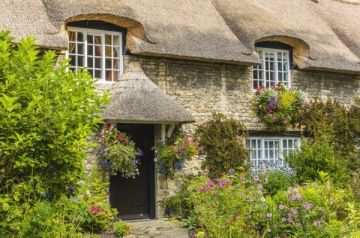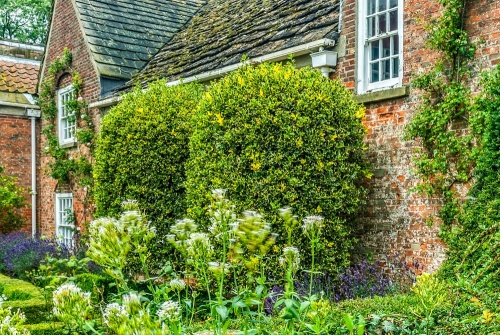
Shandy Hall is the former home of the Georgian writer Laurence Sterne, who lived here from 1760-1768 when he served as the curate of St Michael's Church in Coxwold. It was here that Sterne wrote the novel Tristam Shandy, his most popular work. The house has been restored by a charitable trust as it was in Sterne's time.
The historic building is home to the largest collection of Laurence Sterne artefacts in the world, with personal letters, illustrations, prints, and paintings. Shandy Hall is a museum but it is also a family home and has been lived in for over 600 years.
History
Shandy Hall is a medieval hall house, built around 1430, probably as a residence for the parish priest. The central hall is flanked by two 15th-century gabled cross wings. The timber-framed medieval core of the building was refaced in brick in the late 17th century.
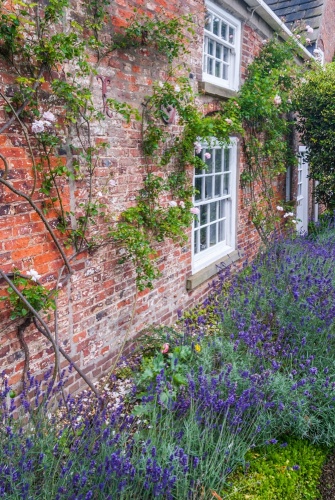
Remarkably for a medieval building, we know the name of the man who built it; George Dayville.
The medieval structure was very simple, with just a hall and a solar, or private chamber. When Laurence Sterne came to Coxwold as the perpetual curate in 1760 he altered the medieval building considerably. He built a two-storey extension and added a cellar and a coach house.
Laurence Sterne (1713-1768)
Laurence Sterne was a native of Clonmel, Ireland, the son of an army ensign. He was sent to school in Halifax, Yorkshire and went on to attend Jesus College, Cambridge where he studied the classics and divinity. He was ordained as a deacon of the Church of England in 1737 and became a priest in the following year.
With help from his uncle, Dr Jacque Sterne, who was the Precentor of York, Sterne was given the living of Sutton-on-the-Forest in Yorkshire. Six years later in 1744 he gained the living of Stillingfleet. Sterne married in 1741 and had several children but only one, a daughter named Lydia, survived infancy.
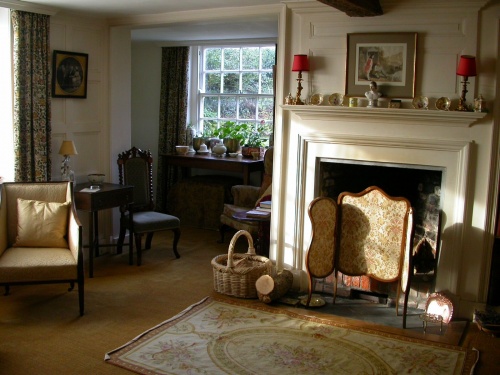
Stern had two sermons published but his first literary success came in 1759 when a pamphlet entitled A Political Romance was published to minor acclaim. Buoyed by the success of A Political Romance, Sterne submitted a draft of the first volume of Tristam Shandy to his London bookseller. The bookseller wasn't interested so Sterne revised the draft and published it himself in 1759 as the first two volumes of 'The Life and Opinions of Tristram Shandy, Gentleman'.
There was no 'best-seller' list in 1759, but if there had been, Tristam Shandy would have been at the top of the list. The book became an overnight sensation and Stene was launched into the stratosphere of the literary world. From being an unknown rural cleric, Sterne found himself having his portrait painted by Sir Joshua Reynolds. Tristam Shandy has never been out of print since Sterne took a chance and published it himself.
The money he earned from Tristam Shandy helped Sterne pay for the extensions to Shandy Hall. He loved his time here, writing, 'I am as happy as a prince, at Coxwould, and I wish you could see in how princely a manner I live - 'tis a land of plenty.'
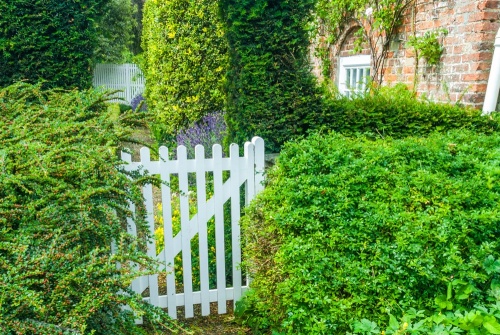
He did not have long to enjoy his 'land of plenty'; Sterne suffered from ill-health most of his life. He travelled to France hoping for an improvement, but none came. He returned to Coxwold but his wife and daughter stayed on in France to live.
Sterne then fell in love with a married woman named Eliza Draper and even prepared a room at Shandy Hall for her. Eliza, however, left England for India with her husband. Sterne poured out his feelings in 'A Journal to Liza'. It was also during his time at Shandy Hall that he wrote his other major work, 'A Sentimental Journey Through France and Italy'.
Laurence Sterne died in 1768 and was buried at St George’s, Hanover Square in London. He was disinterred for dissection by anatomists, but they recognised him and reburied the body. Then when the burial ground of St George's was redeveloped Sterne's body was unearthed and his skull and femur were sent to Coxwold for reburial.
The Gardens
Whilst the Hall is worth visiting for its medieval architecture and its literary connections, the two acres of gardens at Shandy Hall are worth visiting in their own right. The gardens occupy part of an old quarry and are managed to encourage wildlife and birds. There are both formal and informal areas, with over 100 old varieties of roses and a variety of mature trees.
Over 420 species of moths have been discovered in the garden. Moths are (gently) captured in traps at night, the species is recorded and then all the moths are released and the traps reset. The Shandy Hall garden website maintains a 'Moth Blog' with a list of all the moth varieties discovered so far.
From one corner of the garden you can see the Kilburn White Horse, cut into the chalk hillside.
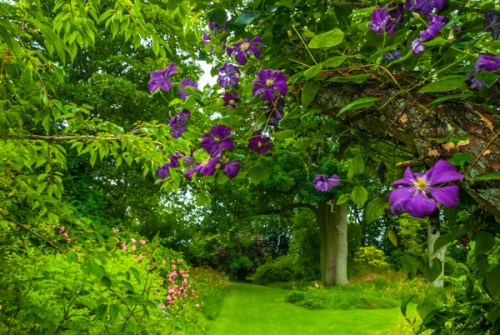
The James Herriot Connection
Just outside the shop and the Old Granary Gallery is an area where plants from the gardens are sold. This area used to be a cowshed when Shandy Hall was a farm. The local vet was Alf Wight, the real-life vet whose adventures were recorded as the James Herriot series of books. Wight came here many times to tend to calves in the barn.
Getting There
Coxwold is four miles from the A19 between Thirsk and York, close to Kilburn. Shandy Hall is on the main road through Coxwold, just a stone's throw from the Fauconberg Arms pub and almost across the road from the parish church. Thee is limited parking at the Hall, but fairly easy parking along the road in Coxwold village.
The image of the Parlour at Shandy Hall is (c) The Laurence Sterne Trust and is republished with gratitude under a Creative Commons license.
About Shandy Hall
Address: Coxwold,
North York Moors,
Yorkshire,
England, YO61 4AD
Attraction Type: Historic House
Location: At the western edge of the village, a short walk from the church and pub.
Website: Shandy Hall
Email: info@laurencesternetrust.org.uk
Location
map
OS: SE531772
Photo Credit: David Ross and Britain Express
POPULAR POSTS
HERITAGE
 We've 'tagged' this attraction information to help you find related historic attractions and learn more about major time periods mentioned.
We've 'tagged' this attraction information to help you find related historic attractions and learn more about major time periods mentioned.
Find other attractions tagged with:
NEARBY HISTORIC ATTRACTIONS
Heritage Rated from 1- 5 (low to exceptional) on historic interest
Coxwold, St Michael's Church - 0.1 miles (Historic Church) ![]()
Byland Abbey - 1.4 miles (Abbey) ![]()
Husthwaite, St Nicholas Church - 1.6 miles (Historic Church) ![]()
White Horse of Kilburn - 2.7 miles (Countryside) ![]()
Birdforth, St Mary's Church - 2.9 miles (Historic Church) ![]()
Gilling Castle - 4.6 miles (Historic Building) ![]()
Gilling East, Holy Cross Church - 5.3 miles (Historic Church) ![]()
Rievaulx Abbey - 5.6 miles (Abbey) ![]()
Nearest Holiday Cottages to Shandy Hall:
Husthwaite, Yorkshire
Sleeps: 2
Stay from: £270 - 1050
More self catering near Shandy Hall



